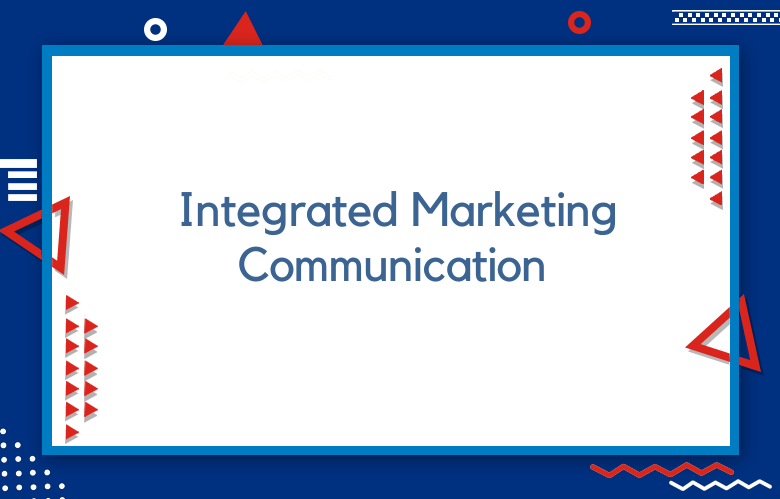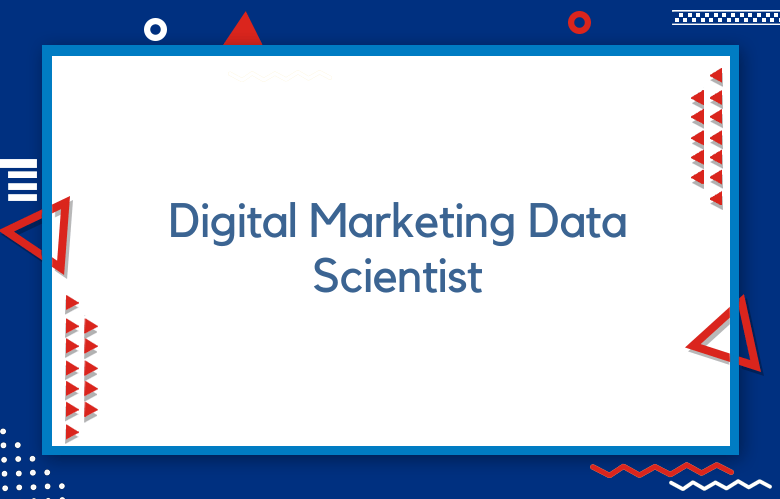Mastering Integrated Marketing: A Comprehensive Guide

In today’s digital marketing world, businesses must effectively reach their target audience through multiple channels to stay ahead of the curve.
This is where integrated marketing comes into play. Integrated marketing uses several channels and tactics to reach customers and prospects and increase brand awareness, engagement, and revenue.
We will cover the ins and outs of integrated marketing and provide tips on mastering it.
Understanding Integrated Marketing (IM)
Integrated Marketing (IM) is a comprehensive approach to organizing and synchronizing all the marketing communication channels, tools, tactics, and techniques.
The IM concept emphasizes consistent brand messaging and cohesive marketing strategies throughout all customer interactions, leading to a seamless customer experience.
What is the primary goal of Integrated Marketing?
Integrated marketing is about having a cohesive and unified marketing strategy that works across multiple channels to create a seamless customer experience.
But what is the primary goal of this approach? It’s simple: to deliver a consistent message across all touchpoints to establish a solid and memorable brand presence.
Whether through email marketing, social media, or traditional advertising, integrated marketing ensures that every interaction with a customer reinforces the same core message.
This helps build brand awareness and fosters brand loyalty, which is essential for any business looking to succeed in today’s competitive market. Ultimately, the primary goal of integrated marketing is to create a lasting impression that will keep customers coming back for more.
How does Integrated Marketing differ from traditional marketing?
Integrated Marketing is a fresh and innovative approach to reaching customers in the digital age. It is a holistic approach to promoting your brand or service built on connecting multiple marketing channels to create a seamless customer experience.
One of the significant differences in Integrated Marketing is the collaboration between the different departments within a business. Integrated Marketing planning involves the entire organization and not just the marketing department.
In traditional marketing, the departments are treated as separate entities and operate independently of each other. Integrated Marketing puts the customer at the center of everything and discovers ways to maximize results by bringing together all communication channels while measuring and evaluating each tactic’s effectiveness.
This approach uses each channel to complement the others, resulting in better brand awareness and customer engagement. Integrated Marketing encourages businesses to think creatively about how they can engage their customers, and it offers a more cost-effective way of reaching them.
What are some of the benefits of Integrated Marketing?
Increased Customer Engagement:
Integrated marketing allows businesses to engage with their customers. By using a variety of marketing channels, companies can reach their customers where they are most active and create a more seamless customer experience.
Improved Customer Insights:
Integrated marketing also provides businesses with improved insights into their customers. By tracking customer behavior across multiple channels, companies can better understand their customers’ wants and needs.
Greater Efficiency:
Another benefit of integrated marketing is that it can help businesses to be more efficient with their marketing efforts. Companies can save time and money using a single platform to manage their marketing activities.
Enhanced Campaign Performance:
In addition to being more efficient, integrated marketing can help businesses enhance their marketing campaigns’ performance.
By aligning their marketing efforts, businesses can create a more cohesive and effective campaign that is more likely to achieve its objectives.
Increased Sales and Revenue:
Ultimately, the goal of any business is to increase sales and revenue. Integrated marketing can help companies achieve this goal by giving them the tools they need to reach more customers and generate more leads.
What is the Integrated Marketing Process?
The Integrated Marketing Process (IMP) is a comprehensive marketing approach that involves coherently and strategically combining different marketing channels and disciplines.
It involves aligning all marketing activities towards a common goal or objective, ensuring that each activity complements and reinforces the others.
The process involves a multidisciplinary approach that covers various areas such as branding, advertising, public relations, research, and sales.
What are some common strategies and tactics for implementing an Integrated Marketing campaign?
Integrated Marketing Campaigns (IMC) can effectively promote a product or service by combining various marketing channels and communication tools in a coordinated and strategic way.
IMC helps to create a unified brand message across all channels to enhance brand awareness and ensure consistency of brand messaging.
Several strategies and tactics are employed in implementing an integrated marketing campaign:
Conduct a situational analysis:
Before starting the campaign, it’s essential to conduct a situational analysis to assess the current marketing environment, target audience, and market competition.
This analysis helps identify the market’s strengths, weaknesses, opportunities, and threats (SWOT), which are crucial for formulating strategies.
Set goals and objectives:
The next step is to set clear, measurable goals and objectives aligning with the company’s overall marketing strategy.
The goals should be specific, measurable, achievable, realistic, and time-bound (SMART), helping to provide a roadmap for the campaign.
Develop a clear and consistent message:
Developing a clear and consistent message across all marketing channels is critical for the campaign’s success. This message should align with the company’s brand, be easily understood, and resonate with the target audience.
Use multiple channels:
Integrated marketing campaigns usually involve multiple channels, including traditional media (TV, radio, print), digital media (websites, email, social media), and other promotional tools. Each channel must be used effectively and efficiently, depending on its strengths and limitations.
Employ creative and engaging content:
The content used in the campaign should be creative, engaging, and relevant to the target audience. This content can include videos, infographics, blogs, and others that can capture the audience’s attention.
Measure and evaluate results:
The final step is to measure, track, and evaluate the campaign’s results to determine its effectiveness. This evaluation should be done regularly and adjusted to meet the campaign’s goals and objectives.
In conclusion, implementing an integrated marketing campaign requires a strategic and holistic approach that involves a thorough situational analysis, clear goals and objectives, consistent messaging, multiple channels, creative content, and continuous measurement and evaluation of results.
By employing these strategies and tactics, companies can create a successful IMC that helps increase brand awareness, reach target audiences, and drive sales.
What are some common misconceptions about Integrated Marketing?
Integrated Marketing is a complex advertising strategy that blends different communication channels, including traditional advertising (print and TV), digital advertising, events and sponsorships, social media, and public relations.
While many businesses have successfully implemented this strategy and reaped its benefits, a few common misconceptions about Integrated Marketing must be addressed.
Creating an Integrated Marketing Strategy
Creating an Integrated Marketing Strategy is a crucial step for businesses looking to establish a strong presence in the market.
In today’s digital world, consumers are bombarded with messages through multiple channels, making it critical for businesses to develop a cohesive, coordinated approach to their marketing efforts.
An integrated marketing strategy combines various marketing channels and tactics to create a seamless customer experience and maximize each medium’s impact.
How important is market research in creating an Integrated Marketing strategy?
Market research is integral to developing an effective and successful Integrated Marketing strategy.
Market research aims to gain insight into consumers’ needs, preferences, and behaviors in a specific market.
Businesses can create targeted marketing campaigns that resonate with their target audience and drive sales by analyzing consumer behavior, market trends, and competitor activities.
What is the role of target audiences in Integrated Marketing?
Target audiences play a fundamental role in Integrated Marketing, as they are the focus of a company’s marketing efforts.
In Integrated Marketing, businesses strive to develop and implement consistent, coordinated marketing strategies across all communication channels to achieve the best possible outcome.
One of the primary objectives of Integrated Marketing is to reach the right people at the right time with the most effective messages.
These messages are tailored to resonate with specific target audiences based on demographic, psychographic, and behavioral characteristics.
Businesses can effectively engage and build relationships with their target audiences by identifying and understanding the needs and wants of different customer segments.
How can we create a consistent brand message across all marketing channels?
One of the critical elements in building a solid brand is consistently delivering a clear and concise message to your target audience across all marketing channels.
Ensuring consistency across all channels is vital in building brand recognition, establishing trust, and ultimately creating brand loyalty.
A clearly defined brand message must reflect your brand’s identity, values, and goals.
This message should be consistent across all marketing channels, including social media, email marketing, advertising, and content marketing.
Ensuring that every piece of content shares the same tone, look, and feel and messaging is essential.
How do we choose the proper marketing channels for our Integrated Marketing campaign?
Choosing the proper marketing channels for an Integrated Marketing campaign can be complex and challenging.
It requires a thorough understanding of the target audience’s behaviors, preferences, and habits. Moreover, it demands a clear comprehension of the campaign’s messaging, branding, and objectives.
First, analyzing the quantitative and qualitative data is essential to identify the most effective communication channels.
Research plays a significant role in determining which channels to use, as it helps to ascertain the media habits and preferences of the target audience.
What should we consider when developing a content strategy for our Integrated Marketing campaign?
Several important factors must be considered when developing a content strategy for an Integrated Marketing campaign.
The first step is identifying your target audience and understanding their needs and preferences. This will help guide the type of content you create and where you distribute it.
Next, having a clear and concise message that aligns with your overall campaign objectives is essential.
Your content should be well-written, engaging, and relevant to your audience’s interests. Search engines should also optimize it to increase its visibility and reach.
Implementing an Integrated Marketing Campaign
An integrated marketing campaign synchronizes different marketing strategies, tactics, and channels to promote a business or brand.
It aims to create a seamless and consistent experience for the target audience across various touchpoints, including traditional and digital media.
Companies must conduct thorough market research to implement an integrated marketing campaign and determine the target audience’s preferences and buying behavior.
This information helps businesses to craft a compelling message and choose the most appropriate marketing channels to reach their audience effectively.
How do we create an effective Integrated Marketing campaign plan?
An effective Integrated Marketing campaign plan is essential for any business to establish a strong brand presence and generate maximum revenue.
To develop an effective strategy, it is essential to understand the target audience and their behavior.
The first step in creating an Integrated Marketing campaign plan is establishing clear and measurable objectives. The objectives should be specific, realistic, and achievable.
For example, they are increasing brand awareness by 20% in the next three months or generating 100 new leads by the end of the quarter.
How do we develop a budget for our Integrated Marketing campaign?
Developing a budget for an Integrated Marketing campaign involves thoroughly analyzing the resources required to run the campaign efficiently without overspending.
The first step in this process is to identify the critical components of the marketing strategy, which may include advertising, public relations, social media marketing, content marketing, and more.
Once you have identified the critical components of the strategy, you need to determine the cost of executing each of them. This can involve researching market prices, obtaining vendor quotes, and evaluating past campaign expenses.
You should factor in the cost of any necessary tools and technologies, such as website hosting, social media management software, and email marketing platforms.
What are some common marketing channels to consider when implementing an Integrated Marketing campaign?
Marketing channels play a crucial role in the success of an Integrated Marketing campaign.
These channels refer to the various methods and mediums used to reach the target audience and promote a brand, product, or service.
Some common marketing channels to consider when implementing an Integrated Marketing campaign include the following:
Social Media:
With billions of active users, social media platforms are among the most popular and effective marketing channels.
Through social media, brands can engage with their audience, create a two-way communication channel, and promote their products and services.
Email Marketing:
Email marketing involves sending newsletters, promotional emails, or personalized emails to a list of subscribers. It is a cost-effective way to reach the target audience and nurture customer relationships.
Search Engine Optimization (SEO):
SEO helps improve a website’s visibility on search engine results pages through organic searches.
By optimizing the website’s content, structure, and keywords, brands can improve their search engine ranking and drive more traffic to their website.
Paid Advertising:
Paid advertising includes social media ads, Google ads, sponsored content, and other paid promotional methods. Brands can use paid advertising to target their potential customers’ demographics, locations, or interests.
Content Marketing:
Content marketing involves creating relevant, consistent, valuable content, such as videos, podcasts, infographics, and other forms of content, to attract and retain a target audience.
Events and Sponsorships:
Brands can participate in or sponsor events to reach their target audience in person. This includes trade shows, exhibitions, conferences, and other events where the target audience will likely be present.
In conclusion, integrating these marketing channels can help create a more cohesive and effective marketing campaign and reach a broader and more engaged audience.
It is essential to choose the correct channels based on the target audience, resources, and campaign objectives.
How do we measure the success of our Integrated Marketing campaign?
To effectively measure the success of an Integrated Marketing campaign, it is essential to establish clear Key Performance Indicators (KPIs) that align with the campaign’s objectives. These KPIs should be specific, measurable, relevant, and time-bound.
One such KPI could be website traffic, which can be tracked through tools like Google Analytics.
An increase in website traffic could indicate a successful campaign as it shows that more people are visiting the website due to the movement.
What should we consider when making adjustments to our Integrated Marketing campaign?
When adjusting an Integrated Marketing campaign, several essential factors must be considered to maximize its effectiveness and achieve the desired goals.
One key consideration is the target audience – is the campaign effectively reaching and resonating with the intended demographic?
Analyzing demographic data and adjusting messaging or tactics is essential to ensure the movement successfully engages the desired audience.
Another important consideration is the channels through which the campaign is being promoted. Are specific channels proving more successful than others?
Is there an opportunity to expand into new channels or adjust tactics within existing ones? Monitoring and analyzing data related to channel performance can help guide adjustments and optimize the campaign’s overall impact.
Conclusion:
Mastering integrated marketing requires a strategic and coordinated approach to marketing across all channels.
You understand your target audience and coordinate your marketing efforts by developing a clear brand message and identity.
You can create a unified and engaging brand experience that resonates with your audience across multiple touchpoints by tracking your results.
With this guide, we hope you understand integrated marketing better and the strategies and best practices to help you master it for your business.
Call: +91 9848321284
Email: [email protected]



